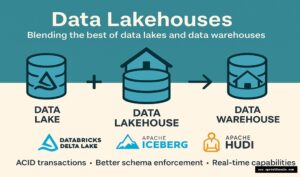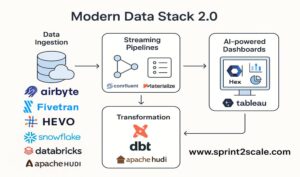Table Of Content
Introduction
The landscape of work has undergone a dramatic transformation in recent years, with remote work becoming the new norm for many organizations. As teams adapt to this virtual environment, Agile methodologies have proven to be invaluable in ensuring efficiency, collaboration, and adaptability. In this comprehensive guide, we will explore how Agile can be tailored to remote work environments, providing insights, tips, and best practices for Agile teams navigating the digital workspace.
Understanding Agile in a Remote Context
1.1 Agile Principles Recap:
Before diving into the specifics of remote work, it’s crucial to revisit the core principles of Agile methodologies. The Agile Manifesto emphasizes individuals and interactions, working solutions, and customer collaboration over processes and tools. These principles remain the foundation for Agile in any setting, including remote work.
1.2 The Agile Mindset in Virtual Teams:
One of the key challenges of remote work is maintaining a collaborative and communicative environment. Agile’s emphasis on regular communication, feedback loops, and self-organizing teams aligns well with the requirements of a virtual workspace. Establishing an Agile mindset is essential for fostering a culture of transparency and adaptability among team members.
Adapting Agile Ceremonies for Virtual Collaboration
2.1 Sprint Planning in a Virtual Environment:
Sprint planning sessions are the heartbeat of Agile development. In a remote setting, using video conferencing tools and collaborative online platforms becomes crucial. Ensuring all team members have access to planning documents and are actively engaged in discussions is essential for effective sprint planning.
2.2 Daily Stand-ups in the Digital Sphere:
The daily stand-up is a cornerstone of Agile communication. In a virtual setting, it’s essential to maintain the rhythm of daily check-ins. Video calls, instant messaging, or dedicated collaboration tools can be leveraged to facilitate quick updates and issue resolution. Encouraging team members to share progress and blockers maintains transparency and fosters a sense of unity.
2.3 Remote Sprint Reviews and Retrospectives:
Conducting sprint reviews and retrospectives remotely requires thoughtful planning. Video conferencing allows teams to showcase their work and gather valuable feedback. Collaborative online tools facilitate retrospective discussions, enabling the team to reflect on what worked well and what could be improved. Implementing these ceremonies effectively is critical for continuous improvement in a virtual environment.
Tools and Technologies for Remote Agile Teams
3.1 Collaboration Platforms:
A variety of collaboration platforms exist to support remote Agile teams. Tools like Jira, Trello, and Asana facilitate project management, while Slack, Microsoft Teams, or Discord enhance real-time communication. Choosing the right mix of tools tailored to the team’s needs is vital for seamless collaboration.
3.2 Version Control and Integration Tools:
In a distributed development environment, version control systems such as Git play a pivotal role. Integrating these systems with project management tools ensures that teams have a unified view of progress, issues, and code changes. This integration promotes transparency and streamlines the development process.
3.3 Video Conferencing Solutions:
Effective communication is the linchpin of Agile methodologies. Video conferencing tools like Zoom, Google Meet, or Microsoft Teams bridge the gap between remote team members, fostering a sense of connection. Utilizing video conferencing for meetings, pair programming, and collaborative discussions enhances communication and minimizes misunderstandings.
Overcoming Challenges in Remote Agile Work
4.1 Time Zone Differences:
One of the significant challenges in remote work is managing time zone disparities. Agile teams must establish clear guidelines for working hours that accommodate the team’s geographical diversity. Additionally, asynchronous communication and documentation become essential for maintaining a smooth workflow across time zones.
4.2 Building Trust and Collaboration:
Building trust in a virtual environment requires intentional efforts. Encouraging team bonding activities, virtual coffee breaks, and informal discussions can help recreate the camaraderie found in physical office spaces. Trust is the cornerstone of Agile teamwork, and fostering a collaborative culture is vital for success.
4.3 Balancing Autonomy and Accountability:
Remote work often emphasizes autonomy, but this should not come at the cost of accountability. Agile teams need to strike a balance between granting autonomy to team members and establishing clear expectations. Regular check-ins, progress updates, and transparent communication channels contribute to accountability without stifling autonomy.
Best Practices for Remote Agile Success
5.1 Establish Clear Communication Protocols:
Clarity in communication is paramount for remote Agile teams. Establishing communication protocols, including preferred channels for different types of communication, response times, and meeting schedules, helps create a structured and efficient workflow.
5.2 Embrace Agile Principles, Tailored for Remote Work:
While Agile principles remain constant, their application may require adaptation for remote settings. Embrace the Agile mindset but be open to adjusting practices to suit the unique challenges of virtual collaboration.
5.3 Invest in Continuous Learning and Improvement:
Agile’s emphasis on continuous improvement is particularly relevant in a dynamic remote work environment. Encourage a culture of learning, experimentation, and regular retrospectives to identify areas for improvement and innovation.
5.4 Foster a Positive Team Culture:
Building a positive team culture is vital for remote Agile success. Celebrate achievements, recognize individual contributions, and provide a supportive environment where team members feel valued. A positive team culture enhances motivation, engagement, and overall productivity.
Conclusion
As organizations continue to embrace remote work, Agile methodologies offer a robust framework for navigating the challenges of virtual collaboration. By adapting Agile principles, leveraging appropriate tools, and embracing best practices, remote Agile teams can thrive in the digital landscape. The key lies in fostering a culture of transparency, adaptability, and continuous improvement, ensuring that Agile principles remain at the core of successful remote teamwork.







No Comment! Be the first one.